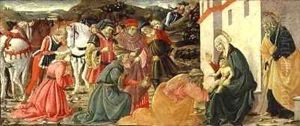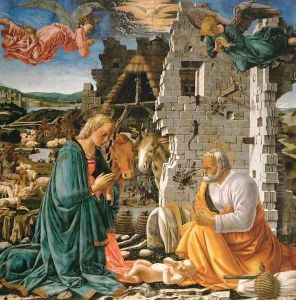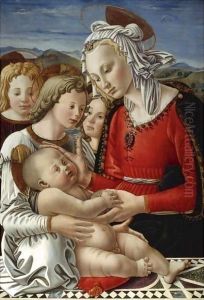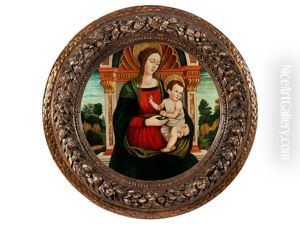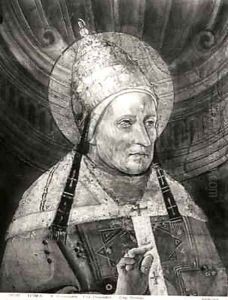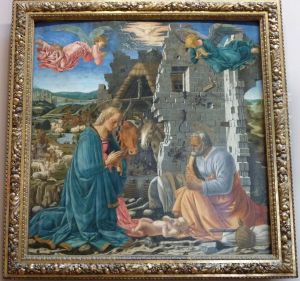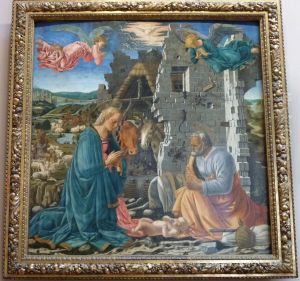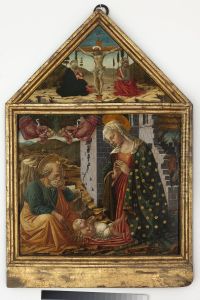Fra Diamante Paintings
Fra Diamante was a Carmelite monk and painter of the early Italian Renaissance, active primarily in Florence and Rome. Born in 1430, he became a follower and collaborator of the illustrious painter Fra Filippo Lippi. Fra Diamante's life and works are somewhat overshadowed by the towering figure of Lippi, yet he played a significant role in the artistic developments of his time. His contributions to Renaissance art, though not as extensively documented as those of his contemporaries, reflect the vibrant cultural and artistic milieu of 15th-century Italy.
Fra Diamante entered the Carmelite order and dedicated his life to both spiritual service and artistic creation. His relationship with Fra Filippo Lippi was not only that of a disciple but also a trusted colleague. When Lippi was commissioned to execute major works, such as the frescoes in the Cathedral of Spoleto, Fra Diamante was often called upon to assist. This collaboration was not merely an assistant's role; it was a partnership that allowed Diamante to develop his own artistic voice while contributing to Lippi's projects.
After the death of Fra Filippo Lippi in 1469, Fra Diamante completed some of Lippi's unfinished works, including the frescoes in the apse of the Cathedral of Spoleto. His style closely mirrored that of Lippi, characterized by graceful figures, a refined use of color, and a delicate handling of religious themes. Despite the similarities, Diamante managed to infuse his works with a personal touch, often focusing on the emotional aspects of religious narratives.
Fra Diamante's own works have not been as well preserved or celebrated as those of his mentor, and many have been lost or remain unidentified. However, his contributions to the workshops he was involved in and the influence he had on the artists around him are undeniable. He is remembered not only for his artistic talent but also for his devotion to his faith and his role in the cultural and religious life of his time.
Fra Diamante died in 1498, leaving behind a legacy that, while not as well-documented as that of other Renaissance masters, reflects the collaborative spirit and artistic fervor of the period. His life and works offer valuable insights into the workings of Renaissance art workshops and the complex interplay of art, religion, and society in 15th-century Italy.
